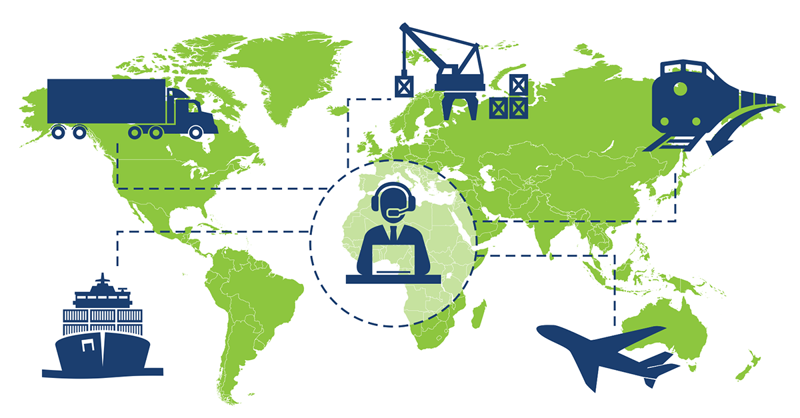[**UPDATE** According to a Shopify report released in February 2019, the trend of shopping outside of the consumer’s home country is, in fact, a global trend. As the expected cross-border holiday parcel tsunami ramps up, we thought it was a good time to once again remind shippers of tips to keep in mind when shipping internationally this holiday season.
Additionally, as we wrote about earlier this year, U.S. Customs and Border Protection has implemented system changes this quarter that will streamline clearance processes while improving data collection, visibility, and border protection. This change is enabling global logistics companies to electronically file more detailed Section 321 information using the Automated Broker Interface (ABI) into the Automated Commercial Environment (ACE) system, eliminating manual and duplicate data entry.]
As eCommerce continues to grow globally, e-tailers face new challenges as they navigate international waters.
There was a time that “going shopping” meant taking a walk to the corner market. If someone was really adventurous, they headed downtown. If they wanted to shop at some of the best retailers in the world, it was usually part of a vacation. Today, with the click of a mouse, people can shop anywhere in the world, including your store.
According to a Pitney Bowes study, fewer consumers shopped cross-border last year, dropping from 70 percent in 2017 to 64 percent in 2018. But those that are shopping outside of their home country are doing it more frequently, with 12 percent of consumers globally shopping cross-border at least weekly, up from 10 percent in 2017.
In all, cross-border eCommerce accounts for 15 to 20 percent of the world's online traffic and is growing at about twice the rate of domestic eCommerce, according to a study reported by DC Velocity. Furthermore, it's expected to represent 22 percent of global online sales by 2020, the report states, with plenty of room for further growth.
Of course, while the Internet enables businesses to sell to anyone, anywhere, anytime, it has also added an extra layer of parcel shipping complexity for retailers to manage. Here are three things to stay on top of when looking to ship your sales around the world:
Regulations
Regulations are fluid, and no two countries will be exactly the same. As you expand your international reach, it becomes more difficult to keep in compliance. You need to be aware of the specific requirements around different products — especially weapons, antiques, food, alcohol, and others that may face more scrutiny — to save time and money from having your products sitting in customs longer than they need to be. That means correctly classifying goods to avoid delays in customs. Trade wars only add to the complexity.
International shipping numbers game
Whether you're shipping to Canada or Cameroon, you want to make sure that you — and your customers — don’t get hit by hidden costs. Begin by estimating the landing cost, including transportation charges, duties, and taxes. The value of goods will influence your taxes, so be sure to give an accurate valuation. Incorrect information can not only throw off your numbers but also raise red flags with customs officials. They don’t have a short memory and you don’t want to be their hobby!
Remember returns
We recently wrote about the importance of returns to your company’s success. When you take that internationally, returns can go from a headache to a death knell. However, if you set up your systems to handle them, you will gain a distinct edge in the competitive international waters.
While international eCommerce is a great opportunity, there are challenges in shipping and logistics. However, with the right systems in place, your chances of success can make going global worthwhile.
Schedule your personalized demonstration to learn how Transtream can help you manage your international eCommerce shipping.
